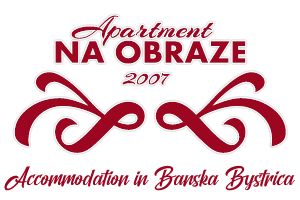Success Behind The Power: Hope, Faith, Love Versus Contagious Nature of Fear as a Leadership Strategy

- 495 Views
- February 5, 2025
- EMAIL SPOT Info & Updates Entrepreneur & Leadership Psychology & Therapy World Top News Stories World Wide News
Fear and hope have an extraordinary power to motivate people, yet they do so in strikingly different ways. For leaders—whether steering a corporate ship, guiding a nonprofit mission, or navigating the complexities of government—understanding how these potent emotions influence behavior is crucial for those looking to inspire change and create a lasting legacy.
Fear acts as an instinctual compass, deeply rooted in our survival instincts. When a leader taps into fear, it can create a powerful wave of urgency, igniting anxiety among team members and drawing their eyes to the threats that loom on the horizon. This immediate reaction can be useful in the short term, energizing teams to make quick decisions or rallying individuals to tackle impending challenges head-on.
The alertness that fear sparks sharpens focus, pushing individuals to swiftly recognize and respond to potential dangers. A classic example of leveraging fear in change management is the “burning platform” approach, where leaders emphasize the dire consequences of inaction, compelling people to embrace necessary changes.
However, the contagious nature of fear comes with significant downsides. As it seeps into the group, fear can breed a toxic atmosphere filled with stress, distrust, and conflict. Over time, a culture built on fear erodes the trust that binds team members together, hindering collaboration and escalating disagreements both within and between teams. The lasting impacts of a fear-driven environment often manifest as employee burnout, despair, and a breakdown of cultural unity, ultimately crippling an organization’s ability to innovate and adapt.
In contrast to fear, hope ignites passion and fosters resilience, creating an environment where individuals feel empowered to take risks and embrace change. By balancing these emotions, leaders can craft a more dynamic and inclusive atmosphere that motivates collaboration and drives meaningful progress.
- breaking new
- current news
- email spot news
- email spot sharing news
- email spot short media news
- email spot spread and share news
- headlights news
- latest email spot information
- latest news
- latest news updates
- local news spot
- media spot news
- political news
- science news
- sport news
- top stories of the day
- world information and news
- Scotland’s ‘forgotten golfer’: From PoW to sporting icon March 11, 2025
- No. 9 Women’s Tennis falls to No. 11 Auburn, 4-3 March 10, 2025
- Gold Price Forecast: Holds Near Highs but Faces Potential Bearish Reversal March 7, 2025
- The polar vortex is acting weird and the US is paying the price this winter March 2, 2025
- Three tropical cyclones are spinning in a row in the South Pacific February 28, 2025
- Antique & Collectible5
- Army & Military21
- Auto & Moto11
- Beauty & Make Up13
- Business & Profession313
- Celebrity & Prominent139
- Coins & Money66
- Crime & Investigation25
- Crypto & Investment33
- Cultural & Customs223
- Ecology & Sustainability70
- EMAIL SPOT Info & Updates429
- Emergency & Breaking News91
- Entrepreneur & Leadership299
- Ethnicity & Religious102
- Farming & Livestock3
- Financial & Stock Market83
- Food & Beverage6
- Grocery & Food3
- Headlines Today314
- Health & Medical44
- House & Properties12
- Learning & Education13
- Lifestyle & Trends122
- Live & Broadcasting4
- Memories & Old News3
- Models & Fashion48
- Monarchs & Royals41
- Music & Showbiznis24
- Nature & Landscape38
- People & Life315
- Politics & Governance113
- Press & Journalism200
- Psychology & Therapy25
- Resources & Framework91
- Science & Theories39
- Sport & Activity27
- Technology & Machinery26
- Travel & Transportation60
- TV & Entertainment78
- Weather & Atmosphere21
- World Top News Stories424
- World Wide News429
- 0
- 89
- 1,688
- 8,358
- 132,084
- 51,867






